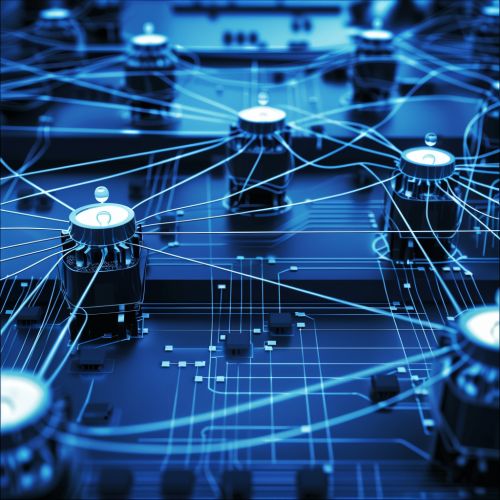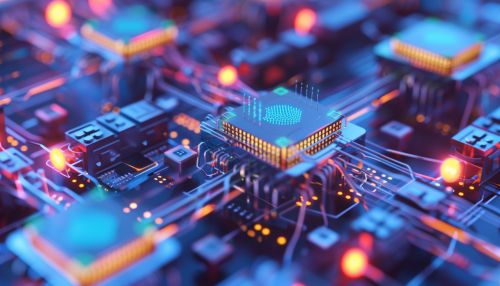Grid computing
Introduction
Grid computing is a form of distributed computing that involves coordinating and sharing computing resources across dynamic and geographically dispersed organizations. It is a model of computing where the processing power of several computers is harnessed to solve problems that are too intensive for any stand-alone machine.


Overview
The concept of grid computing originated in the early 1990s as a project to develop high-performance computing. It was designed to provide a high level of abstraction and middleware for the integration of a large number of heterogeneous resources. Grid computing can be defined as a type of parallel and distributed system that enables the sharing, selection, and aggregation of geographically distributed autonomous resources. These resources are dynamically assigned to a task based on their availability, capability, performance, cost, and users' quality-of-service requirements.
Architecture
The architecture of grid computing is typically divided into several layers, each providing different functionalities. The layers are as follows:
Fabric Layer
The fabric layer is the base layer that provides the resources to the grid. This includes computational resources, storage systems, network resources, and databases.
Connectivity Layer
The connectivity layer is responsible for network protocols such as IP and TCP, which allow the grid services to pass messages between each other.
Resource Layer
The resource layer is responsible for managing individual resources. This includes the protocols for the initiation, monitoring, and control of resource-sharing operations on individual resources.
Collective Layer
The collective layer contains protocols and services that capture interactions across collections of resources. This includes services such as resource discovery, scheduling, and data replication.
Application Layer
The application layer is where the grid-enabled applications reside. These applications use the services provided by the other layers to accomplish their tasks.
Benefits of Grid Computing
Grid computing offers several benefits over traditional computing models. These include:
Resource Sharing
Grid computing allows organizations to share resources, such as processing power, storage, and data, across a wide area network. This can lead to significant cost savings, as it reduces the need for each organization to invest in its own dedicated resources.
Increased Processing Power
By harnessing the processing power of multiple computers, grid computing can handle large-scale, complex calculations and data-intensive tasks more efficiently than a single computer could.
Improved Collaboration
Grid computing facilitates collaboration between different organizations by allowing them to pool their resources and work together on shared tasks. This can be particularly beneficial in fields such as scientific research, where large-scale data analysis and modeling tasks are common.
Enhanced Flexibility and Scalability
Grid computing systems are highly flexible and scalable. They can easily accommodate increases in demand by adding more resources to the grid. Similarly, resources can be removed from the grid when they are no longer needed.
Challenges and Limitations
Despite its many benefits, grid computing also presents several challenges and limitations. These include:
Security
Security is a major concern in grid computing, as it involves sharing resources across different organizations and potentially exposing sensitive data to external threats. Ensuring the security of the grid and the data it processes is a complex task that requires robust security mechanisms and policies.
Interoperability
Interoperability is another significant challenge in grid computing. Given that the grid is composed of heterogeneous resources from different organizations, ensuring that these resources can work together seamlessly can be difficult.
Resource Management
Managing the resources in a grid computing system can be complex, particularly when it comes to scheduling tasks and balancing the load across different resources.
Performance
While grid computing can offer increased processing power, it can also suffer from performance issues due to the latency involved in transmitting data across the network. This can be particularly problematic for tasks that require real-time processing.
Applications of Grid Computing
Grid computing has a wide range of applications across various fields. These include:
Scientific Research
In scientific research, grid computing is often used for large-scale data analysis and modeling tasks. For example, it has been used in projects such as the Large Hadron Collider (LHC) at CERN, where it helps to process the vast amounts of data generated by the experiments.
Bioinformatics
In bioinformatics, grid computing is used for tasks such as genome sequencing and protein folding, which require significant processing power.
Financial Services
In the financial services sector, grid computing is used for tasks such as risk modeling and fraud detection, which require the processing of large amounts of data.
Climate Modeling
In climate modeling, grid computing is used to process the large amounts of data required to create accurate models of the Earth's climate.
